Want To Hear About The Time I Almost Died?
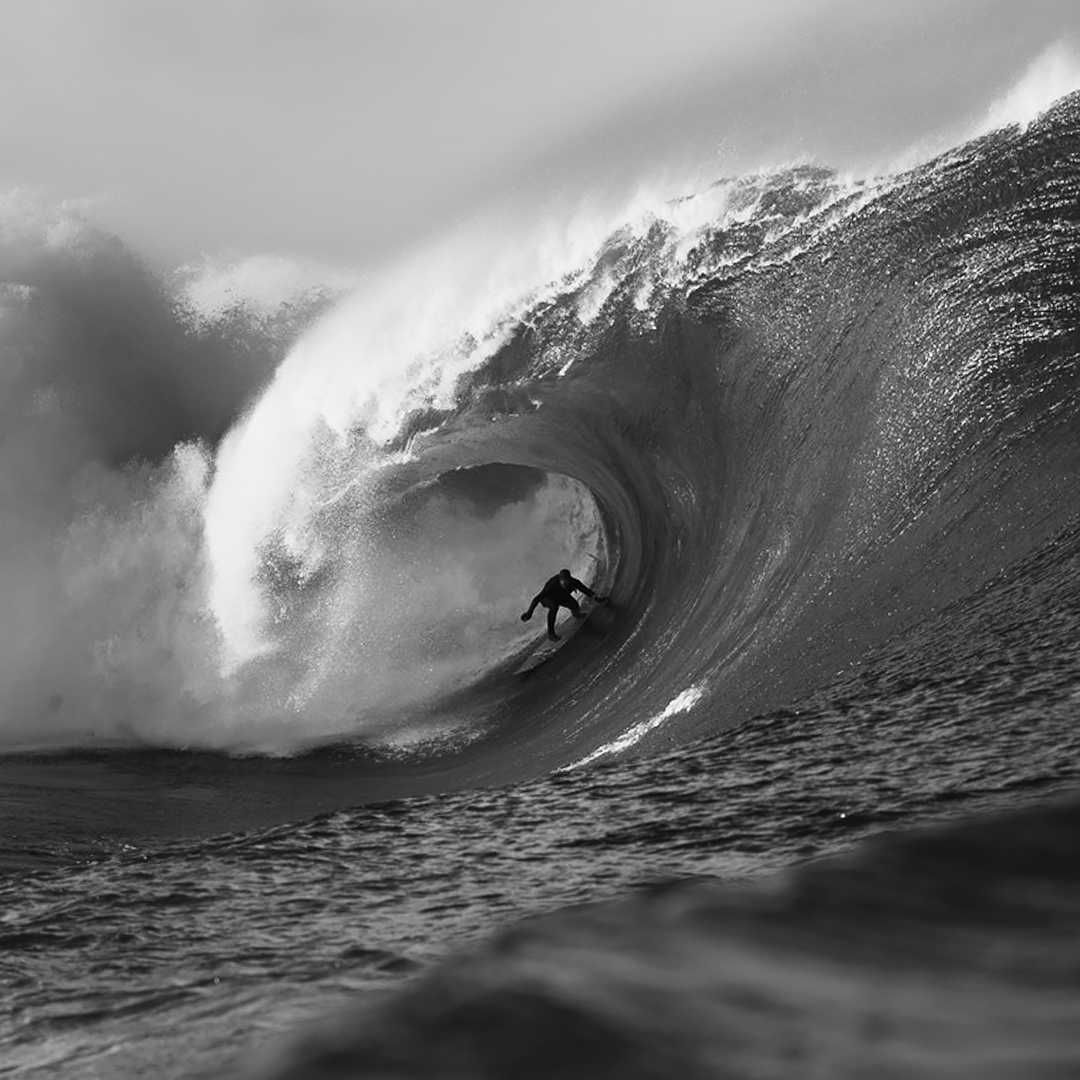
Will Skudin used persistence and preparation to forge his place in the world of big-wave surfing. Along the way he wrestled with the same vulnerabilities we all face in the water: fear, anxiety and self doubt.
By DAN FITZPATRICK
Will Skudin still remembers the exact date he encountered the prospect of his own demise.
It was January 25, 2007. The Long Island, N.Y. surfer was thousands of miles from home and searching for challenging waves along Mexico’s Baja California Peninsula when a clean-up set near the town of Todos Santos drove him deep underwater. Skudin had been in this situation many times before. He knew what to do. Hold your breath. Don’t panic. Let the wave do its thing.
This time, however, it all went terribly wrong. The force of the wave ripped Skudin’s wetsuit over his head, making it impossible to see his way to safety. He wasted valuable energy pulling the hood back into place and soon lost all movement in his arms and legs. His oxygen was nearly gone. It wouldn’t be long until he blacked out.
“Right then, I knew it. ‘Uh oh.’”
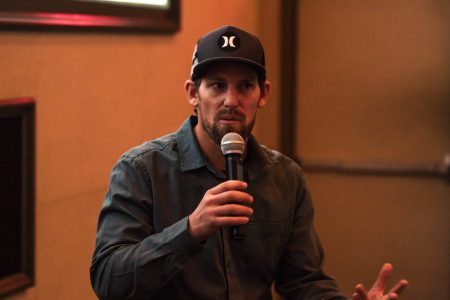
Will Skudin: “You just can’t, ever panic.” Photo: Chris Hamlet/Hurley
Skudin is one of the world’s best big-wave surfers. Each year he peers down 20-foot, 30-foot, 40-foot or 50-foot mountains of water in Portugal or Hawaii or California and commits to an experience most of us would rather avoid. But what should encourage even the newest beginner is that Skudin struggled with the same vulnerabilities that are part of the surfing experience at any level: fear, anxiety and doubt. That he is willing to bare these feelings publicly is exceedingly rare among those of his kind.
That’s the closest I’ve ever come.
Skudin’s story — unspooled last month before a live New York audience convened by the Hurley Surf Club — begins as it should: in the water. He is from a family of Long Island swimmers and ocean dwellers, and his mother fittingly placed him in the Pacific months after he was born. His first memory of wanting to ride big waves was at age 7, rendering surfers as stick figures on childhood drawings. A chance meeting with big-wave pioneer Laird Hamilton on Long Island’s Lido Beach at age 12 convinced him that it was possible for a real person to do this.
His knew the white horse he wanted to ride first: Mavericks, a giant, vicious slab looming inside a bay south of San Francisco that had already taken the life of surfer Mark Foo in 1994. His parents were worried enough about this prospect to send Skudin to a therapist, and Skudin set himself a goal of assuring the therapist that all would be ok. if the therapist was convinced of his seriousness, he figured, his parents would be as well.
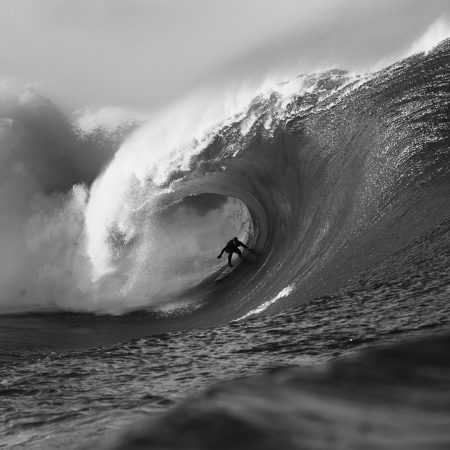
Skudin as a teenager had to convince a therapist that his desire to surf big waves was a healthy pursuit. Photo: Hurley
He was 16 when he arrived at Mavericks for the first time, accompanied by his father. On day one, a nasty encounter with the wave destroyed his board. Skudin said he wanted to try again. His dad purchased a new board, and on day two the teenage Skudin completed a series of first-time Mavericks rides. His exploits at Mavericks later appeared in a movie produced by Long Beach, N.Y surf shop Unsound Surf.
He chose pro surfing over college, but his early days in that world were not easy. Even though an apparel maker called Zoo York paid him $500 per month plus travel expenses to surf around the world, his rides never made the magazines during promotional trips with other top athletes. Being from New York, a big city with few big waves, was actually a liability.
“There were some people who didn’t want me around,” he said. “I knew my path was going to be a little harder. The beginning of everything is hard.”
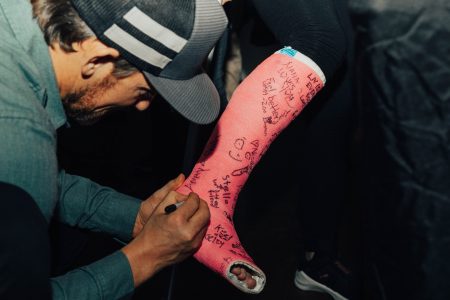
Skudin is now one of the best known surfers from the New York area. Here he signs the cast of a fan in Brooklyn. Photo: Chris Hamlet/Hurley
He won people over with persistence and enthusiasm, talking himself onto boats destined for the most challenging surfing realms. There was one memorable encounter at age 17 with big-wave pioneer Garrett McNamara as McNamara prepared to make a trip to Cortes Bank, a barely submerged island set far from the California coast. Skudin wrangled an invite because he knew a surfer from Virginia Beach who knew Garrett. Garrett’s one condition: “500 bucks and he is good.”
The beginning of everything is hard.
Here is how he remembers that exchange:
Will: “So I walk up to him with 500 cash.”
Garrett: “’You are the Jersey guy?’”
Will: “I was so scared to say, ‘no, I’m from New York.’”
Garrett: “’Grab those gas cans and get them on the boat.’”
(Skudin does what Garrett asks and then says he needs to fetch his own boards out of the car)
Garrett: “’Oh, you plan on surfing, huh?’”
Pluck did not always protect Skudin from disappointments. His role as manager of Zoo York’s surfers disappeared after the team was disbanded in 2009. He and his brother Cliff had a surf camp in Long Beach, but the Zoo York displacement left him in a funk that coursed through many parts of his life. He lost his enthusiasm for set waves at places like Mavericks; at home he found his way into more fistfights. A low point, he said, came one morning when his father woke him at 6 a.m. He was on his dad’s couch, nursing a black eye from a scrap the night before. He was 25.
You are a washed-up big wave surfer at 25 years old.
“He says: ‘Look at you; you are a washed-up big wave surfer at 25 years old living off the same photos for 2 years.” Skudin had no new big-wave experiences to use in promotional materials for the Skudins’ Long Beach camp.
“It is engraved in the back of my head. He is totally right; I ran same session photos for the camp 2 years in a row. He noticed it. I remember being like, what am I doing? I was either I was going down a really dark route or I was going to have to turn the page.”
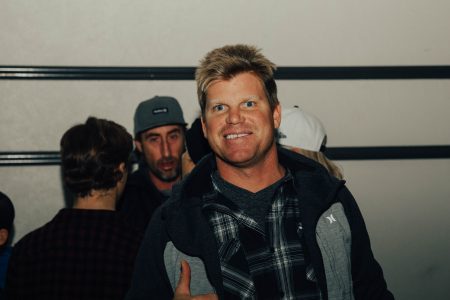
Cliff Skudin, Will’s brother. Cliff and Will run the Skudin Surf camps and the Hurley Surf Club’s New York branch from Long Beach, N.Y. Photo: Chris Hamlet/Hurley
His confidence took its most wounding blow in the aftermath of that nasty 2007 wipeout in Todos Santos, Mexico. Skudin recounts what happened after interviewer Tyler Breuer asks about his worst-ever beating in the water. Skudin turns to the audience — ‘Oh man I’m going to cry now” — and poses a question of his own: “You guys want to hear about the time I almost died?”
What’s important to know is that Skudin trains for these deep hold downs so he can survive them. He practices holding his breath and sharpening his mental state. He studies what happens to the human body when oxygen levels plummet so he can identify the signs of danger.
“You ever wake up in the morning and feel your arms tingling?” he says. “That’s from cutting off circulation, which is a lack of oxygen.” The body, he explains, begin to shut down underwater if oxygen levels drop, beginning with the limbs and moving quickly to the heart. “That’s when it blocks off your brain and you black out.”
His mantra: “You just can’t, ever panic. Try to find a happy place and let the wave do its thing.”
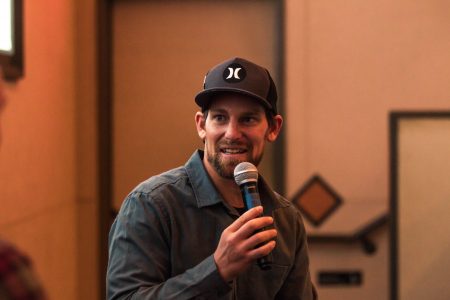
At age 25 Skudin hit a low point: “Either I was going down a really dark route or I was going to have to turn the page.” Photo: Chris Hamlet/Hurley
Yet his preparation was not enough to anticipate the unexpected. At Todos Santos, he says, Skudin was 10 to 15 seconds away from death once the wave choked him with his own wet suit. The giveaway: his legs and arms no longer worked. His heart and brain were next.
I was either I was going down a really dark route or I was going to have to turn the page.
How he escaped is still a mystery. “God lifted me to the top of the whitewater,” he says, and a friend was waiting to pull an inert Skudin onto a jet ski sled. He cried that day and vowed never to ride big waves again.
Skudin pauses as he recounts this near-death experience, perhaps so he can gain more control over what he would like to say. It’s clear more than a decade later that the event is as meaningful as any in his life. The audience stays silent, allowing him to find the words.
“That’s the closest I’ve ever come, and I thank God every day that I am still here.”
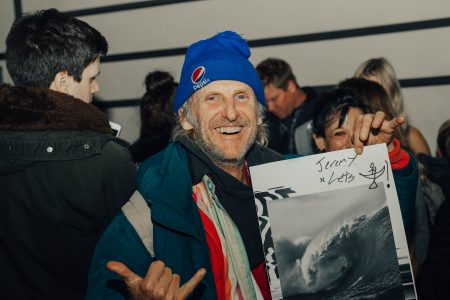
A fan gets his Skudin autograph at the conclusion of a Hurley Surf Club event. in Brooklyn, N.Y. Photo: Chris Hamlet/Hurley